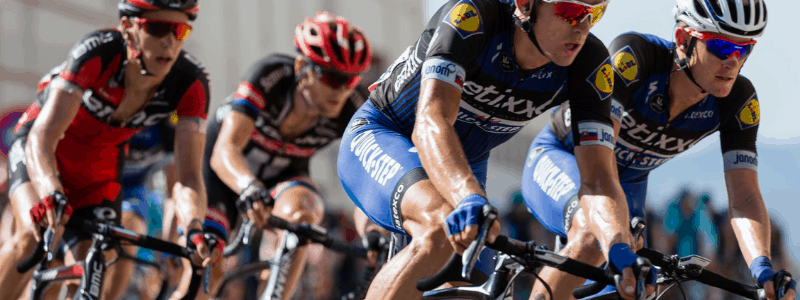
Tom Affinito
VP Corporate Development @ Skai

Tom Affinito
VP Corporate Development @ Skai
Marginal gains are how successful organizations consistently find big improvements. Yes, often brands want transformational, big quantum leaps forward, but it’s a slow-and-steady approach that will win the race. In today’s post, Skai’s Tom Affinito discusses how marginal gains are easier to achieve and can add up to help brands win in today’s highly competitive marketplace.

Previously I discussed the approach of test-and-learn organizations, and how they use marketing experiments to qualify data, discover new insights, and align their messaging with evolving customer expectations.
But can your organization do this?
Is this a goal that is just too far from your current practices to achieve?
Don’t despair. Many of today’s leaders were upstarts, challengers to the marketplace, who taught themselves how to win. And often, it’s not about taking magical, quantum leaps forward, but rather a steady, highly rigorous test-and-learn approach that keeps your organization course-correcting to navigate those tough waters while your competitors fail at their complicated plans.
Dave Brailsford, now Sir Dave Brailsford, did not aspire to become a Commander of the British Empire. He just wanted to ride his bike, and to get better and better at it. Spending his youth cycling in Britain and France, he later studied business and athletic science. And then he became the performance director for British Cycling in 2003.

Over the century of yearly contests at the Tour de France, the world’s premier endurance cycling race, Britain had never taken home the coveted yellow jersey given to the overall leader. In Brailsford’s decade at British Cycling, that changed. First garnering 2 gold medal wins at the Athens Olympics in 2004, the British team went on to dominate the Beijing Olympics in 2008 with 8 gold medals. And then the first the UK Tour de France yellow jersey win in 2012.
And then 8 more gold medals in 2014.
And another Tour de France yellow jersey in 2013.
And another in 2015.
And another in 2016.
And another in 2017.
No proponent of quick fixes, Brailsford had steadily transformed his cycling team over the course of a decade from being contenders with few trophies to becoming a world-class record-dominating team.

Download this complimentary Skai white paper to learn more
Brailsford’s approach to performance was not based on quick fixes, but on sustainable, continuous improvement using data insights. The approach is easy to understand, and is based on the theory of marginal gains: 1) gather key metrics and understand their role in race performance as either direct performance indicators, lagging indicators, or leading indicators, and 2) focus training on continuous small gains, on the order of a mere 1% improvement on just one metric every training session.
“The whole principle came from the idea that if you broke down everything you could think of that goes into riding a bike, and then improved it by 1%, you will get a significant increase when you put them all together,” Brailsford explained.
Skeptics will think that 1% is not enough, that improvements that don’t hit 15% to 25% levels are not worth the time…or at least not worth the time to focus on and incorporate into existing processes. But skeptics may be forgetting the powerful growth effects of continuous interest in finance. And many people do not appreciate the alternative: that not building in this 1% focus into your team’s process means that you will be letting opportunities slip away, potentially losing 1% performance over a suite of metrics and driving brand performance down.
James Clear offers a chart showing how this gap grows over a year, yielding a 38:1 performance difference for the marginal gains team versus a more sluggish competitor that does not incorporate reflection and improvement.
Is your company getting 1% better every day, or 1% worse every day?
I’ve received questions and comments from our recent articles on marketing measurement and building a test-and-learn organization, and concerns from some operational practitioners that evolving the types of differentiating capabilities described previously is too difficult, too hard to achieve organizationally.
While I can not assure readers about internal challenges they know all too well, I can vouch for the success I have seen with many of our clients who have taken this marginal gains approach as the method to evolve their test-and-learn culture, to improve the quality and quantity of data-driven decisions, to discover opportunities and strategies that keep them closer to customer intent and need.
Skai’s Impact Navigator is the only SaaS solution for measuring your true marketing incrementality. Unlock smarter market planning, better budgeting, and stronger alignment to business objectives by measuring and monitoring the true business impact of your marketing programs.
With Impact Navigator you can:
Contact us today or set up a quick and easy demo.
We use cookies on our website. Some of them are essential, while others help us to improve this website and your experience.
Here you will find an overview of all cookies used. You can give your consent to whole categories or display further information and select certain cookies.